The Breakdown
Pros
Cons
Introduction
With 2020 in the rearview mirror, it’s time for a follow-up review to my initial look at the Aerostich Transit 3.0 suit. Part of the reason it has taken so long was due to COVID-19 putting the brakes on a lot of business and trade.
When I first received the Transit suit about a year ago, I found the pants ran a bit large. The size 36 I received was more like 37, plus they could stretch a couple of inches from there. They were basically unable to stay “up” without a belt or zipping them to the jacket. I also didn’t care for the position of the knee armor as a result of the large sizing.
After discussing this with the good folks at Aerostich they said they would send a smaller size and felt confident that this would address my concerns. This conversation happened in February 2020 and due to the effects of the pandemic, Aerostich wasn’t able to get a pair of 34’s sent to me until August 2020.
Here we are in January 2021 and I’ve had the past months to get some seat time with pants that fit properly. There are some other updates to the original “first look” included here so read on for all the details.
The Transit 3.0 Suit
For those of you who haven’t read the previous review or are coming into this review without little familiarity with the Transit Suit, here’s a quick summary.
The Aerostich Transit 3.0 is a two-piece motorcycle riding suit that employs a special waterproof and breathable leather material for the majority of the suit construction. The goal of this suit is to provide protection from both crashes and the elements and that it can be worn in a variety of climates.
To achieve this, Aerostich uses leather that is bonded with a waterproof and breathable membrane that together is called Corium+®. This material replaces the Gore-Tex® based Pro Shell leather used in the previous iterations of the Transit suit which became unavailable years ago.
Corium+®
So what is this new material making up most of the shell of this third iteration of the Transit suit? Corium+® is not really a specific product but rather a technology that can be applied to leather. Basically, it involves bonding multiple layers of materials, as well as treating micro-perforated leather to which they are bonded in order to create a waterproof and breathable final product. In the case of the Corium+ ® used in the Transit 3.0 suit, the leather is cowhide but other types of leathers can be used.
Diagram of the Corium+ ® layers (via the Mat Group website)
The above diagram shows how the various layers are stacked. You can go to the page here for an interactive version of the above graphic if you like. The quick rundown is:
Top Layer: Perforated layer
Mid: Waterproof membrane
Lower layer(s): Reinforcing layers to protect the membrane
You can get all the details on Corium+® at the Mat Group website.
The idea is to take the protective characteristic of leather and make it more comfortable for a wider range of weather conditions. By allowing water vapor to exit through the shell of the suit, it makes it more comfortable in warmer conditions as sweat doesn’t build up as fast as it might in typical waterproof gear.
Construction
Since I covered a lot of details about the overall look and construction, I’m not going to repeat all that info here. I will say that the Transit suit has held up perfectly and shows little if any signs of wear since first receiving it. If you want a refresher on the materials and other construction details please have a look at the first look review here.
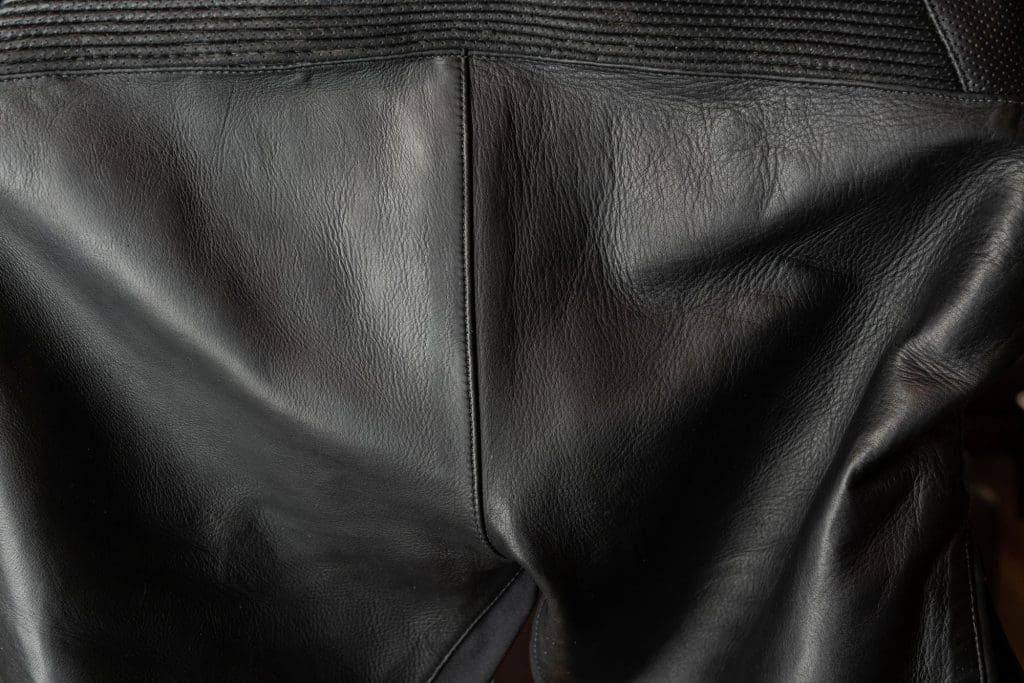 A section of the non-perforated Corium+ cow hide leather used in the Transit 3.0 suit
A section of the non-perforated Corium+ cow hide leather used in the Transit 3.0 suit
Zipper Things
Since receiving the new, correctly sized pants, I have found that the issue I was having with a sticky zipper on the connection between the pants and jacket has gone. The issue must have been with the pants side of the connection as the new pants zip and unzip just fine from the jacket without getting stuck
Also, since my first look review, Aerostich now offers a connection adapter for the Transit 3.0 jackets and pants to Roadcrafter pants and jackets. This opens up some new possible combinations for owners of both suits.
Fit and Sizing
Having received a size 34 short pair of Transit 3.0 pants just as autumn was approaching worked out well for being able to get some seat time and evaluate. Before I get into that I wanted to point out something about how the size 36 pants worked in a way for which they really weren’t intended, as overpants.
Overpants?
Aerostich doesn’t market the Transit 3.0 (or the previous iterations) as being designed to fit over other apparel like they do their Roadcrafter series. The Transit pants are not designed to have jeans or slacks worn underneath but since the sizing was quite generous in the size 36’s I thought I would give them a go as overpants just to see how they would function while I waited for the smaller size to arrive.
And how’d they do?
In a word, “great”.
Wearing the Transit 3.0 pants over dress slacks or khakis for my morning commute to work proved comfortable. Also, thanks to the long side zippers on the legs, it was easy enough to get them on and off with little fuss. Of course, this is what one would expect being one size (and then some) larger than needed.
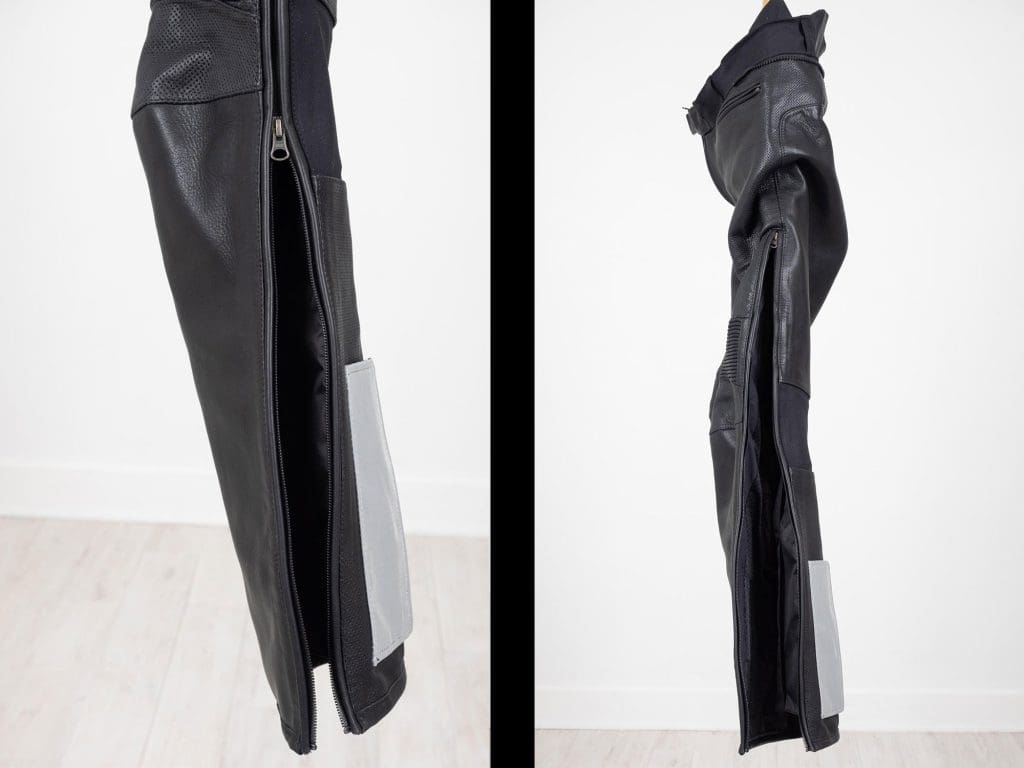 Leg zippers run almost full length for easy donning and doffing over boots
Leg zippers run almost full length for easy donning and doffing over boots
Be aware there are some limits. The area around the knees seems relatively narrow so bulkier pants like heavy jeans or cargos might make that area a bit tight if using the Transit 3.0 pants as overpants. So with this brief look at “off-label” use, let’s have a look at how the Transit 3.0 suit does when properly fitted.
Not as Overpants, Remember?
Armed with a size 34 short pair of Transit 3.0 pants, I was now ready to give them a proper evaluation worn in the way they were intended. The first thing I noticed is that they did fit closer to my size 36 waist without being tight. They only needed to use a small amount of the available stretch to fit. This removed the need for a belt to keep them in place but I do like the fact that belt loops are provided if one prefers or needs to wear a belt.
Overall the fit was slightly shorter and the legs are indeed about an inch and a quarter shorter than the previous pair with this pair measuring at 30.25 inches (76.8cm), which is fine with me for my 30” inseam. I also found the knee armor seemed to fall in a better spot for my build and landed in a more forward position than the previous pair where the armor seemed to stay more inward.
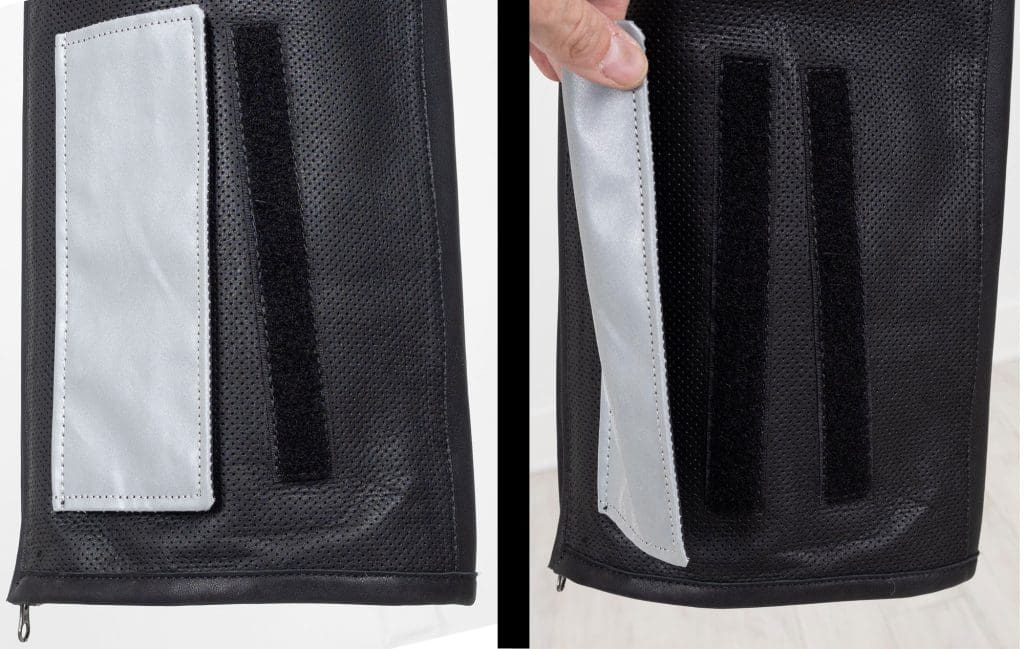 Leg openings are adjusted via these hook and loop fasteners hidden under the reflective areas
Leg openings are adjusted via these hook and loop fasteners hidden under the reflective areas
The adjustable leg openings can handle a wide range of boots thanks to some generous adjustment. I pointed out in my first look review that at first, I hadn’t even realized the lower leg openings were adjustable. Now that I am aware of them (under the reflector patches) it is great to be able to make them fit closely around my Dainese Fulcrum boots as well as the smaller tops of my TCX X-Blend boots.
Overall, I have a much better fit by going one size smaller. Other reviews seem to reflect a similar experience so although the sizing may be larger than expected it seems to be consistent. Keep this in mind as you choose your own size and I encourage you to reach out to Aerostich customer service and discuss your sizing with them so they can guide you to the correct size for your build.
Armor
I talked about the included TF5 armor in my first look review but I neglected to post some photos back then. Below is a photo of the armor included with the jacket showing the large CE 2 back protector as well as the shoulder and elbow armor pieces.
Shown below are the armor pieces included with the pants which cover the knees and the hips. Personally, I’d like to see larger pieces with more shin coverage at the knees but these knee protectors are at least level 2. It would also be nice to have height adjustment in the knee armor pocket for setting optimal positioning.
The hips get by with just level 1 likely for the sake of comfort but there is a level 2 version available from SAS-Tech that I’d like to see as an option for riders like me that want the higher level of protection.
All of the armor is in easy to access pockets so one is free to replace any of these armor bits with other types if they prefer assuming they fit properly in the pockets. For my own use, I remove the back protector when using my Klim Ai-1 airbag vest since it has its own protector built-in along with the airbag.
Comfort
The new pants were surprisingly stiff when I first removed them from the package and tried them on. I think that after having the larger pants for a while, even though I didn’t get the chance to wear them much, I was spoiled by how they had broken in.
This quickly became a non-issue as by the end of my first ride with them they already felt more relaxed. The leather does break in quickly and I’m sure this is helped by the perforations which would make the material more flexible overall. I also understand from riders that have had the previous iteration(s) of the Transit suit that the Corium+® material is more pliable than the original Gore-Tex® product.
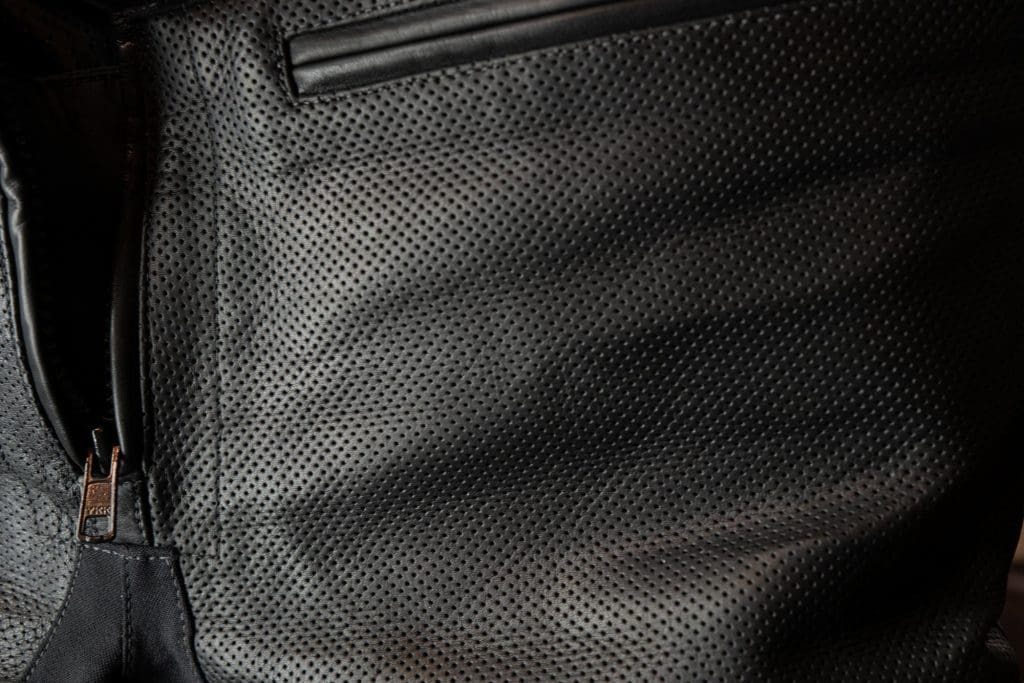 Closeup of the Corium+ surface
Closeup of the Corium+ surface
The size 34 pants fit well overall, for really being closer to a size 36 but they do seem a bit narrow in the knee area. This is definitely an area where one is reminded that these pants are not designed as overpants.
The Transit 3.0 Suit is certainly not a lightweight by any means but the bulk is well managed and once broken in, it’s actually comfortable when riding, except…
Wrists and Neck
The sleeve cuffs on the Transit 3.0 jacket are bulky and stiff and even after months of wearing they are still a bit of a bother. I will hand it to Aerostich, they do “own” this issue. They actually include instructions on how to use a C-clamp to help train the leather to fold for best fit. Doing this helps a bit but I don’t think it should be necessary.
Wrist cuffs are stiff and bulky but one gets used to it
Part of the bulky feel I believe comes from the fact that the sleeves seem to run a little long on the Transit jacket causing the cuffs to move up past the wrist. I would have thought that maybe this is a singular fitment issue with this jacket and my own build, but other reviewers have made similar comments about sleeve length.
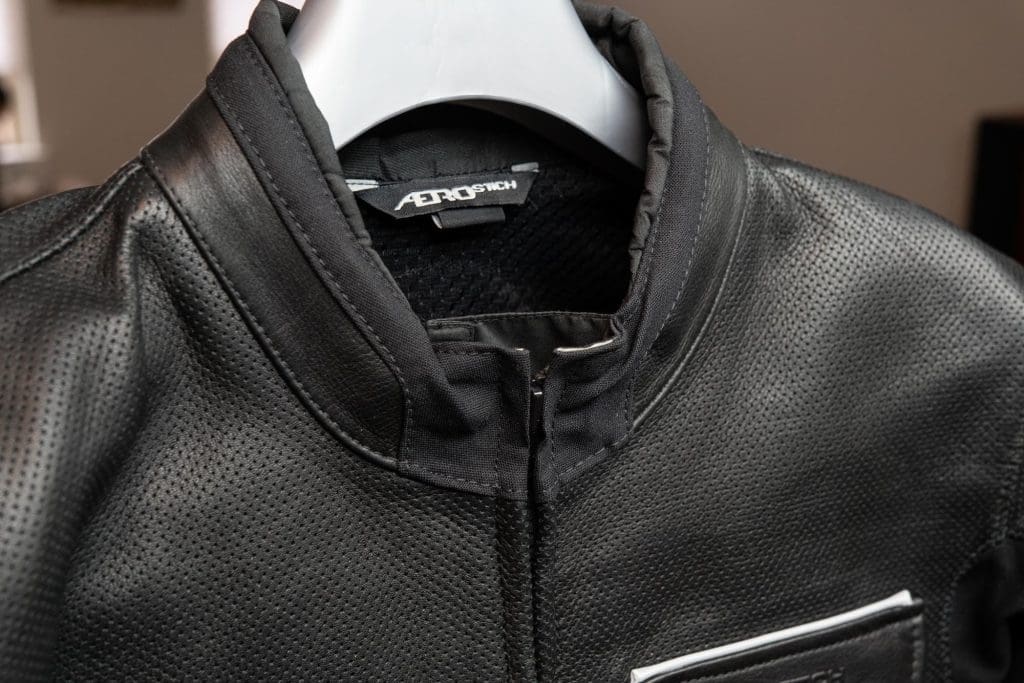 The neck could use a softer material than currently used at the edge for comfort
The neck could use a softer material than currently used at the edge for comfort
Once in the riding position on my Ninja 1000, it’s not much of an issue but your experience may vary depending on your build and the layout of your motorcycle. Still this the only riding jacket I’ve reviewed, or owned for that matter, that had a long sleeve issue.
Moving from the sleeves to the neck, the collar doesn’t break in as well as other areas of the Transit suit and remains a bit stiff over time.
Ventilation
I mentioned in my first look review that despite the perforations in the leather, the Transit Suit doesn’t flow air like typical perforated gear. Being waterproof by design, this material is going to obviously restrict airflow, but that doesn’t mean the Transit 3.0 is stuffy in warmer weather.
While the perforations don’t really let in much air, areas where wind travels across the surface will feel a cooling effect as some air and moisture vapor is drawn out of the perforated portions. This doesn’t create a blast of air but it does prevent the Transit 3.0 suit from feeling like one is wearing a plastic bag.
Keep in mind that if your “four seasons” include summer temps in the 90’s and high humidity this would likely be pushing the limits of comfort. Living in the Nashville, TN area I can verify that those conditions are too warm for me in this suit, but everyone has a different tolerance for riding in hot conditions.
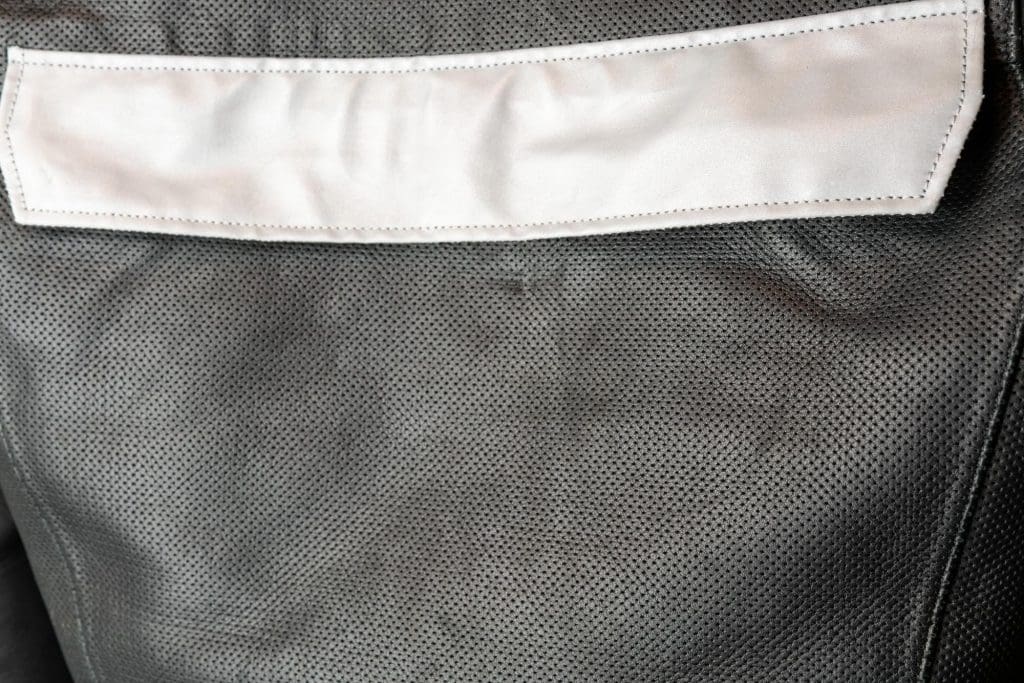 Rear reflector on the back of the jacket hides the rear vent and waterproof zipper
Rear reflector on the back of the jacket hides the rear vent and waterproof zipper
In addition to the perforations in the shell, there are two vents under the arms that can be accessed by opening the waterproof zippers. If I didn’t already have an Aerostich suit, I would have expected to get some airflow through these openings. However, they don’t really pull in much air but they do allow more air to be “pulled out” of the suit. The same can be said for the rear vent on the back between the shoulders.
My Two Cents on Ventilation
One way to get some airflow would be to simply unzip the main closure on the front of the jacket and let in some air directly. However, I’d like to have a closure at the collar of the jacket by way of a snap or hook and loop to keep the collar from flapping in the breeze. I often do this very thing with my Cousin Jeremy suit, which does have a collar closure, and it helps a lot
Another option might be to add a pair of vents to the front using the same waterproof design as the underarm vents. This would allow one to get some air directly into the jacket but it does create a potential place for leaks since rain would have a direct path to the zippered closure.
I should make it clear that I’m not a motorcycle gear designer (you knew that, right?) so there may be very good reasons that either or both of these options are not a part of the Transit 3.0 design. Maybe in the future, there could be an option for riders to have front vents installed if they are willing to risk any potential waterproofing issues. Speaking of waterproofing…
Waterproofing
I have found that the best way to avoid getting wet when riding in the rain, is to actually want to go riding in the rain. Sure enough, since having the Transit 3.0 suit on hand to review, now with the correct size pants, I had a difficult time catching a rain shower to test the suit.
Eventually, the rain and I got on the same schedule and I was able to spend some time in a good, soaking rain. Other reviews I had read had me feeling confident that the Transit 3.0 suit would do a good job of repelling rain. So I wasn’t surprised when it did in fact remain completely dry on the inside even while dealing with a rain shower at around sixty miles per hour for around 25 miles.
I found one weak spot in my overall rain gear during test riding and that was the back of my neck. Since the Transit jacket doesn’t have a high collar, the neck gaiter I was wearing did get damp in the space between the lower edge of my helmet and the top of the collar. This isn’t a reflection on the suit but it is an area to easily forget about when preparing for extended riding in the rain.
The fact I remained dry inside the suit wasn’t the best part. I’ve had other waterproof gear over the years that have done well at keeping the rain out. The problem has been that I end up stifled and sweaty due to the poor breathability of most rain gear. It makes it worse in the rain as the humidity in the area is obviously high during a rain shower. This is where the Transit 3.0 suit shines.
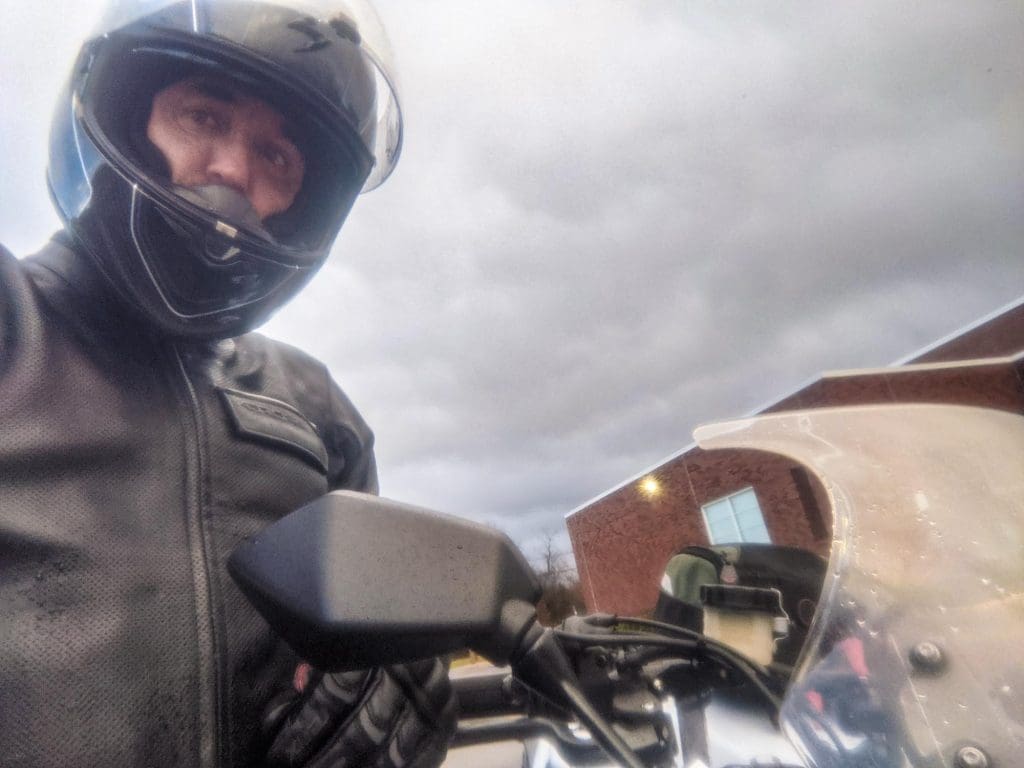 A brief stop during a rainy ride to test the waterproofing of the Transit 3.0 suit
A brief stop during a rainy ride to test the waterproofing of the Transit 3.0 suit
It took me a while to realize it, but it finally dawned on me while I was on my return leg of my rainy route, that I didn’t feel that humid buildup inside this suit that I’m used to getting with other waterproof gear. In fact, the climate inside the suit felt no different from before I caught up with the rain than it did during the actual time in some heavy rainfall.
I expected the rain to be kept out but the way the interior remains comfortable is outstanding. Additionally, the promise of the leather not getting soaked through holds up in real-world riding conditions. Once I got back home the suit dried very fast. Even though the rain had stopped before I arrived back at the garage, there was a lot of mist from cars in front of me that kept me covered in water drops.
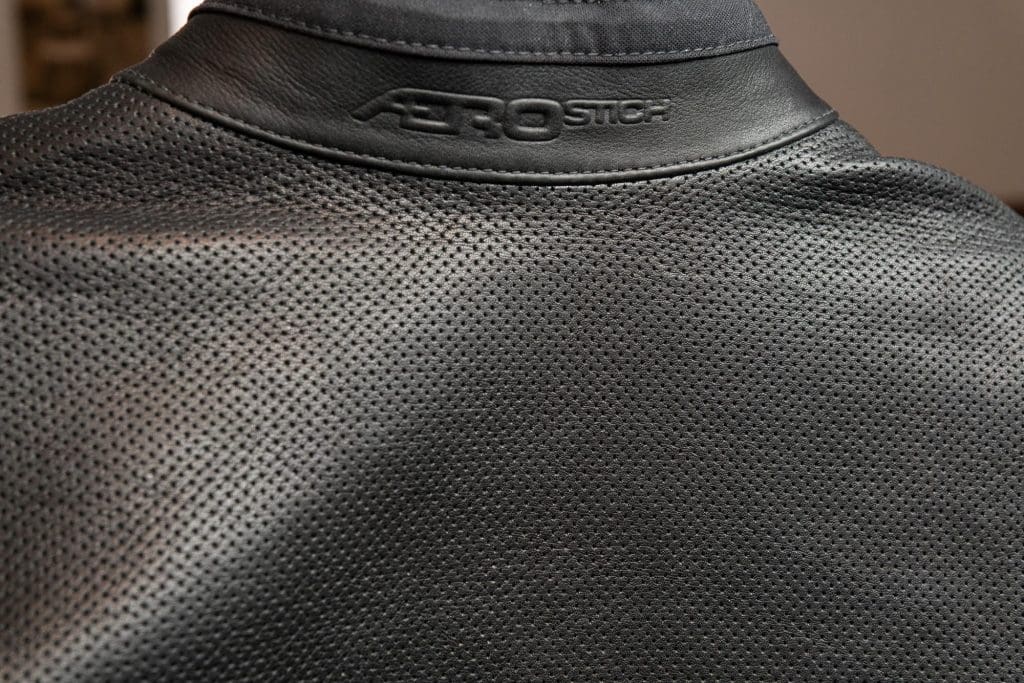 Despite the large amount of perforations in the Corium+ material, it remains completely waterproof
Despite the large amount of perforations in the Corium+ material, it remains completely waterproof
Once I was able to take off the suit I noticed the jacket and pants didn’t feel like they had gained much, if any, weight. I checked the interior areas by hand to confirm that there were no damp areas on the inside. Then, I left the suit hanging in a space where it had reasonable ventilation and at the first “one-hour” check the exterior was already completely dry and showing the residue of the road grime that had spattered on me throughout the ride.
All of the previous to say that the Transit 3.0 suit and Corium+® is the real deal when it comes to waterproof and breathable. This is the gear I wish I had during my three-hour ride from Barber Motorsports Park back to Nashville a few years ago where it rained almost the entire time.
For those interested the rest of my riding gear used in the rain riding test included my Dainese Fulcrum boots and the Reax Ridge gloves. Both the gloves and boots performed flawlessly at preventing the rain from getting at my hands and feet.
About the Klim Ai-1 Airbag Vest and the Transit 3.0 Suit
After the publication of my review of the Klim Ai-1 airbag vest back in October of 2020, there were comments left here at webBikeWorld, and in online forums that I visit, regarding the compatibility of that vest with one and two-piece riding suits. Since I happen to have this vest and a Transit 3.0 suit in the same place I thought I would give it a go, but first, a disclaimer.
To the best of my understanding, the “compatibility” issue that Klim refers to is not due to a specific issue with their airbag vest, but rather the fact that they don’t have other manufacturer’s gear in-house to test. Even if they did have this gear on hand, they would have to test multiple sizes and variations as well as account for the fact that riders also come in many shapes and sizes.
This makes the idea of them giving a “compatible” rating to gear outside of their own label a costly and difficult proposition at best. With all that said, there is no reason one can’t test their own gear with the vest to see if it will work. To satisfy my own curiosity and those of our readers, that is what I did.
First, I looked at Klim’s recommendations for the overall fit of the jacket and compared those specs to the Transit 3.0 Jacket. You can see those specs in my Klim Ai-1 review. Since the jacket runs a little large on me, the measurements showed that it should be fine plus a little extra wiggle room.
The unknown here is what happens when the vest inflates when the jacket and pants are zipped together. Will there be enough room in the pants to allow the jacket to lift off my shoulder, pulling the waist of the pants up when zipped together, so that I’m not injured or “discomforted” in the crotch area when that happens?
Connection zipper attached to a spandex panel provides flexibility
The answer, in this case, is “barely”. While I wasn’t exactly comfortable with the vest inflated, I wasn’t in pain and my voice remained in its normal register. One thing that helps in the case of the Transit 3.0 suit is the zipper attachment on the jacket is connected to a section of elastic fabric which provides a couple of inches of “give” to the connection between the jacket and pants.
Since I used the manual inflation adapter that comes with the refill gas cartridge I received with the vest, there was no “sudden” deployment. It could be that a rapid fill of the vest might cause the vest to pull harder with more potential for discomfort or injury. After thinking about this I decided to order the Transit-to-Transit Ellipse.
This is a stretchy band of material that zips between the jacket and pants to provide extra height to the suit for riders that have longer torsos and/or need more forward lean in the combo when zipped together. With the extra couple of inches in place, I will feel perfectly comfortable about the vest going off while I am fully zipped into the Transit 3.0 suit. I say “will feel” as this particular accessory is currently on backorder on the Aerostich site.
-Begin “Butt Covering”-
The combination of the Transit 3.0 suit and the Klim Ai-1 Airbag vest works (for me) and once I receive the ellipse accessory I’ll feel a little more at ease. Of course, everyone is built differently so you need to decide for yourself if this is something you feel comfortable doing. And to make the point again, just because this works for me does not mean that it will work for everyone. If you decide to use an Ai-1 vest with your own Transit suit, you are doing so at your own risk.
-End “Butt Covering”-
Conclusion
The Transit 3.0 is an excellent successor to the original and second-generation Transit suits. The combination of protection from the leather exterior combined with the waterproof and breathable characteristics offered by the Corium+ technology certainly seems to meet (or exceed) the goal of this suit.
The waterproofing is the real deal and while one doesn’t feel a blast of air through any of the ventilation options, the shell breathes well enough to keep the interior from feeling stuffy in hot and humid weather. Of course, there are limits that will vary by the climate in your area but the Transit 3.0 suit does an excellent job of coping with it for a suit offering the protection of thick leather in an all-black-package.
While there’s a lot to like here, I would like to see Aerostich address a couple of issues. The sleeves could be a little shorter and the sizing chart for the pants could also be updated to be more representative of the true size. To top it off, I’d love to see a redesign of the collar with a top closure (snap or hook and loop) as well as a softer top edge.
Finally, there’s the $1,784.00 dollar gorilla in the room. The price is no small consideration and will be a barrier for many riders. However, if you want the excellent combination of versatility, comfort, and protection there are not many other options that bring all of these qualities together at any price.
4.0 Stars
Pros
- Heavy duty construction
- Included TF5 armor is mostly CE level 2
- Leather breathes very well for being waterproof
- Aerostich customer service is excellent
Cons
- Sleeves are a little long with bulky cuffs
- Collar could be adjustable/more comfortable
- Price will be a barrier to many riders
Important Links
Specs
- Manufacturer: Aerostich
- Price in USD (When Tested): Jacket $987.00 | Pants $897.00 (USD)
- Made In: China
- Colors: Black
- Sizes (Jacket): 38 to 52 with short, regular, and long variants
- Sizes (Pants): 30 to 44 with short, regular, and long variants
- Review Date: January 2021


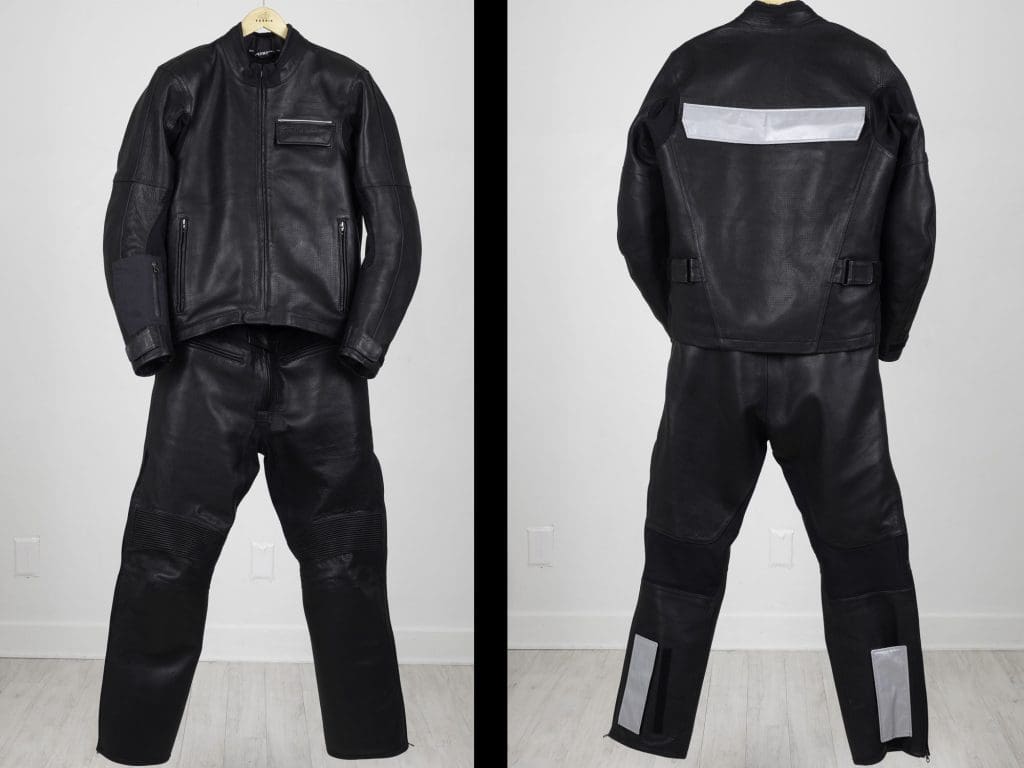
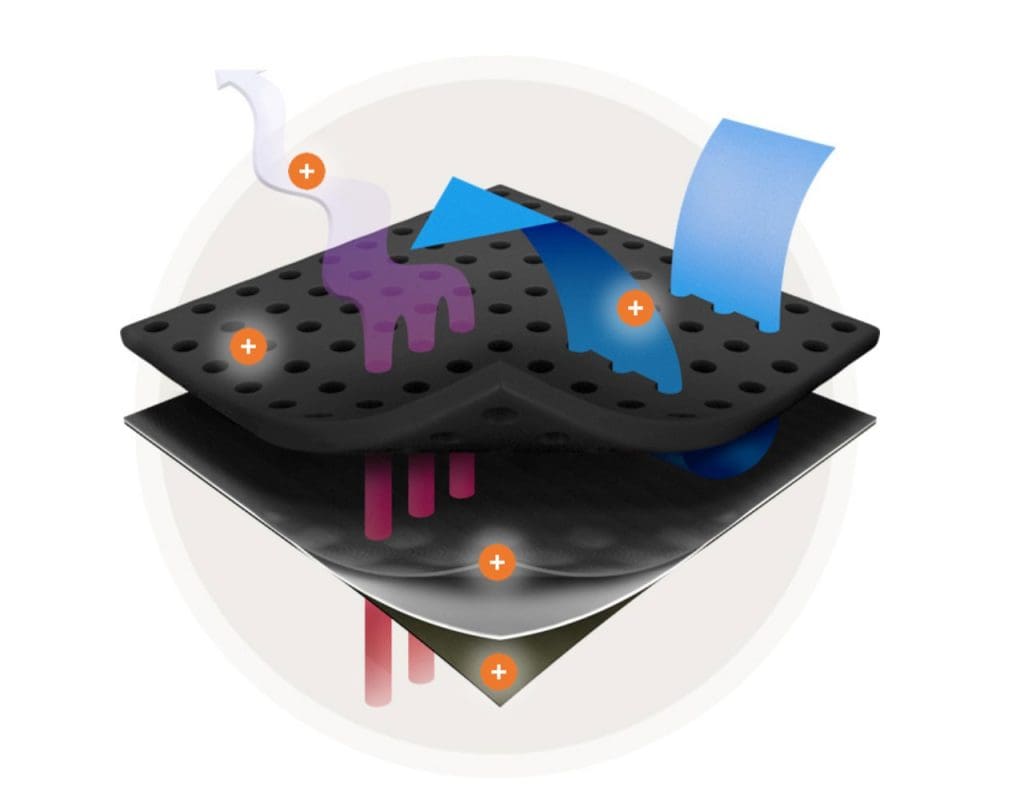
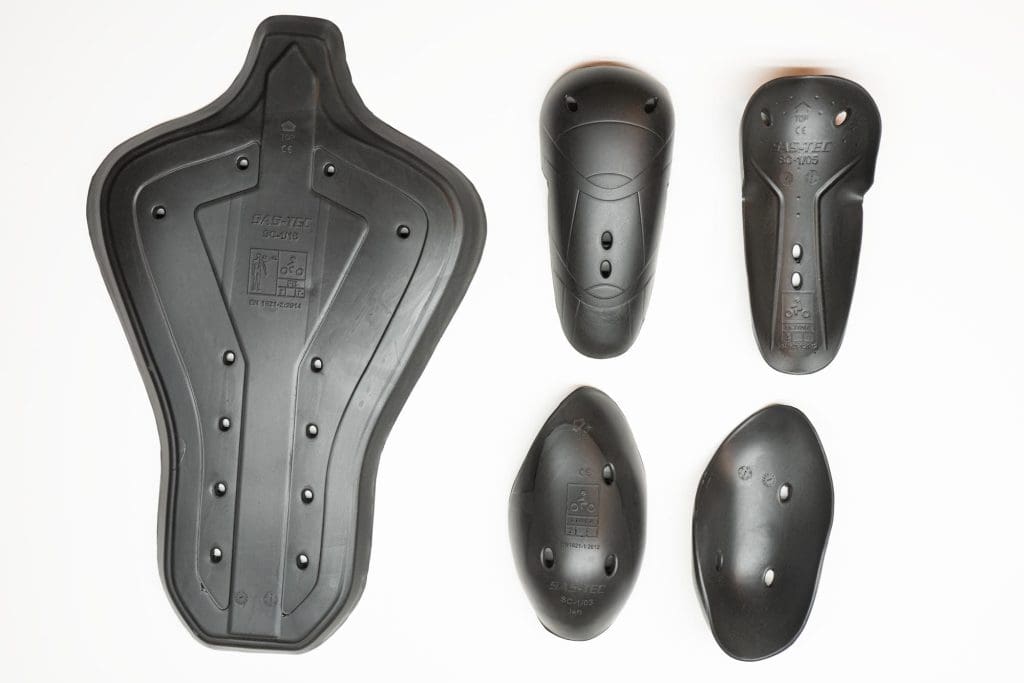
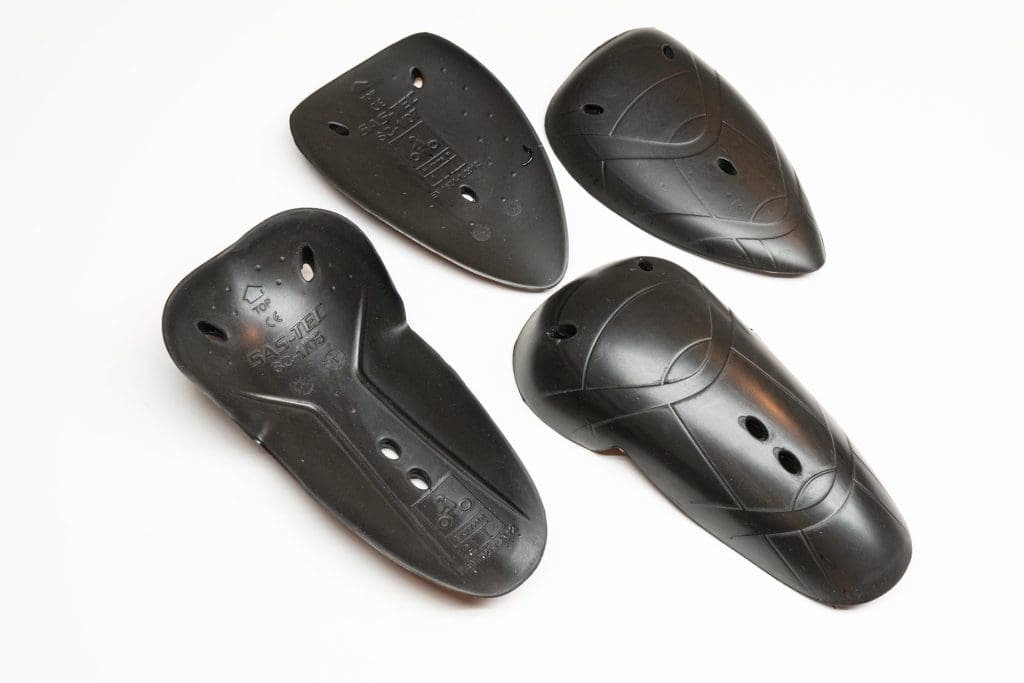
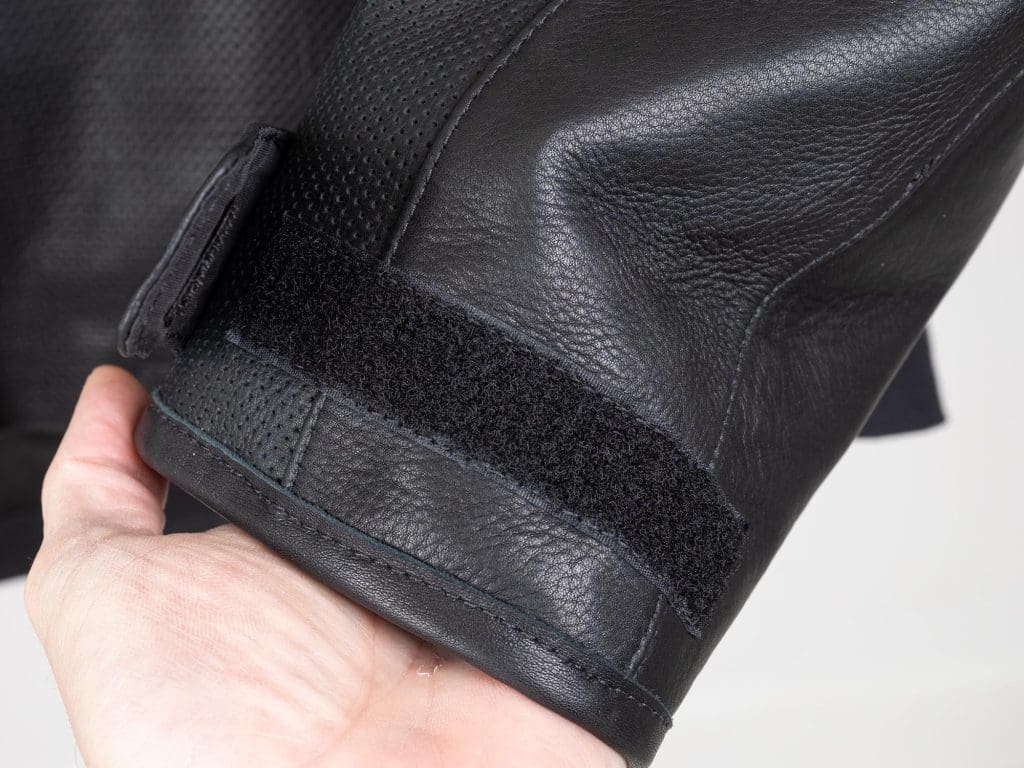
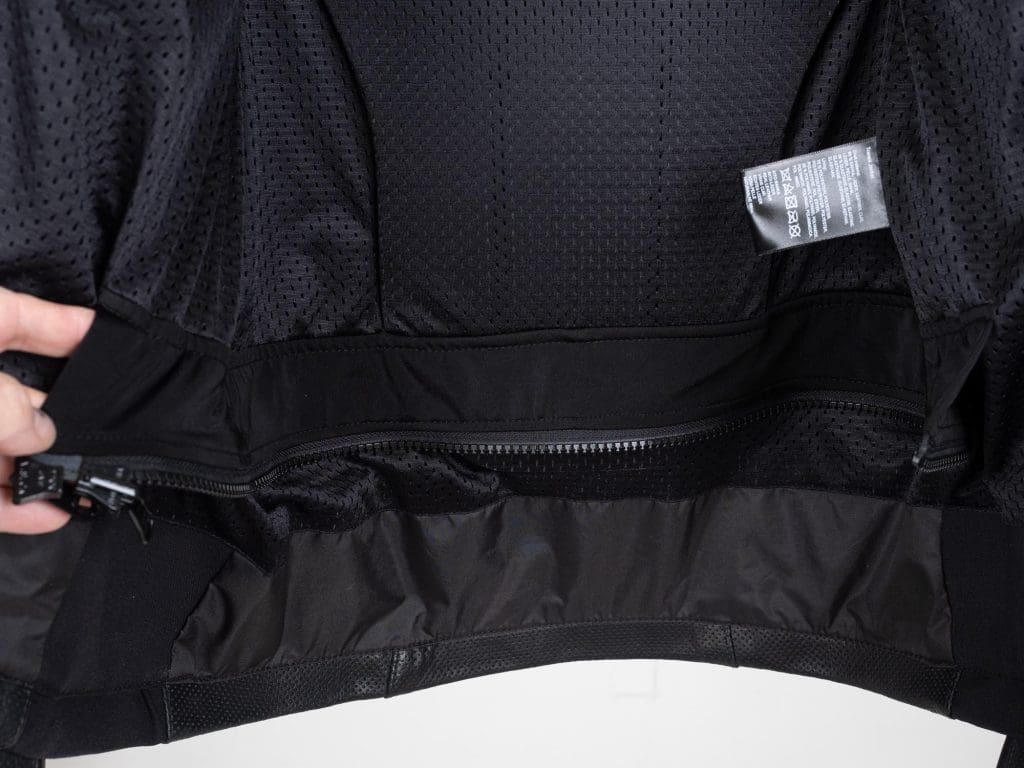
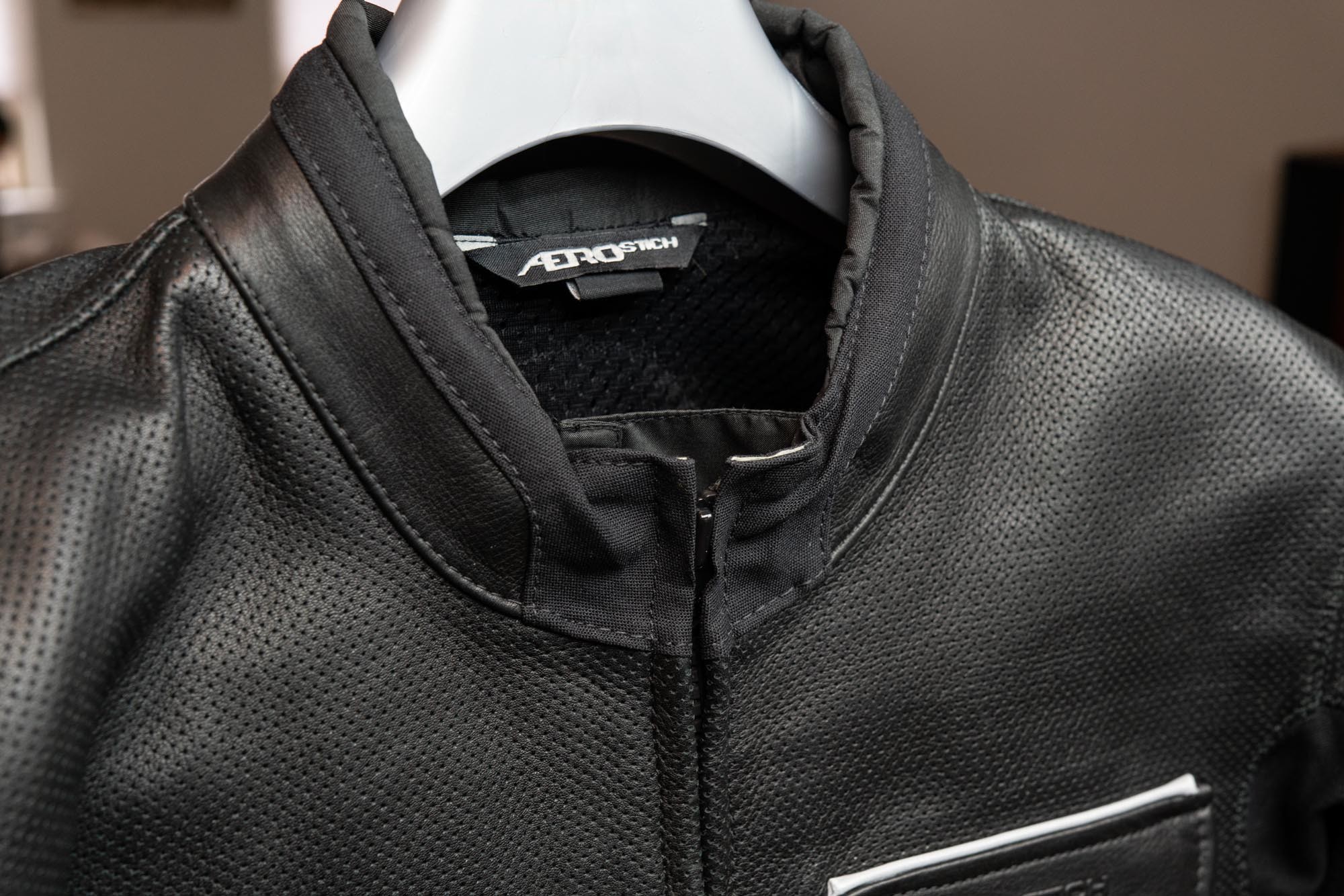
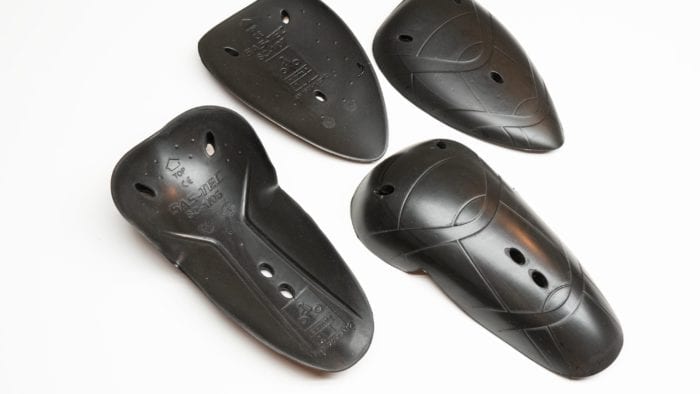
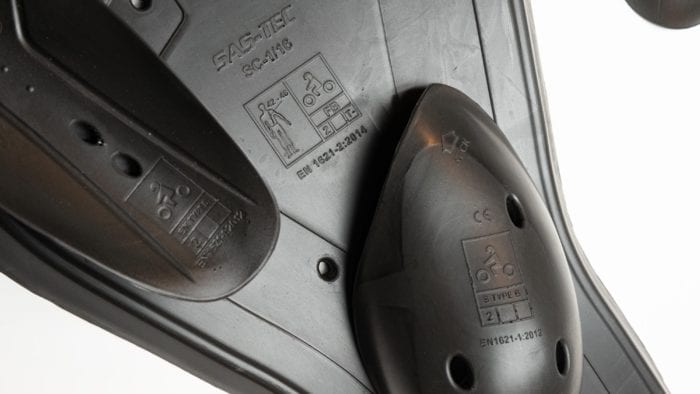
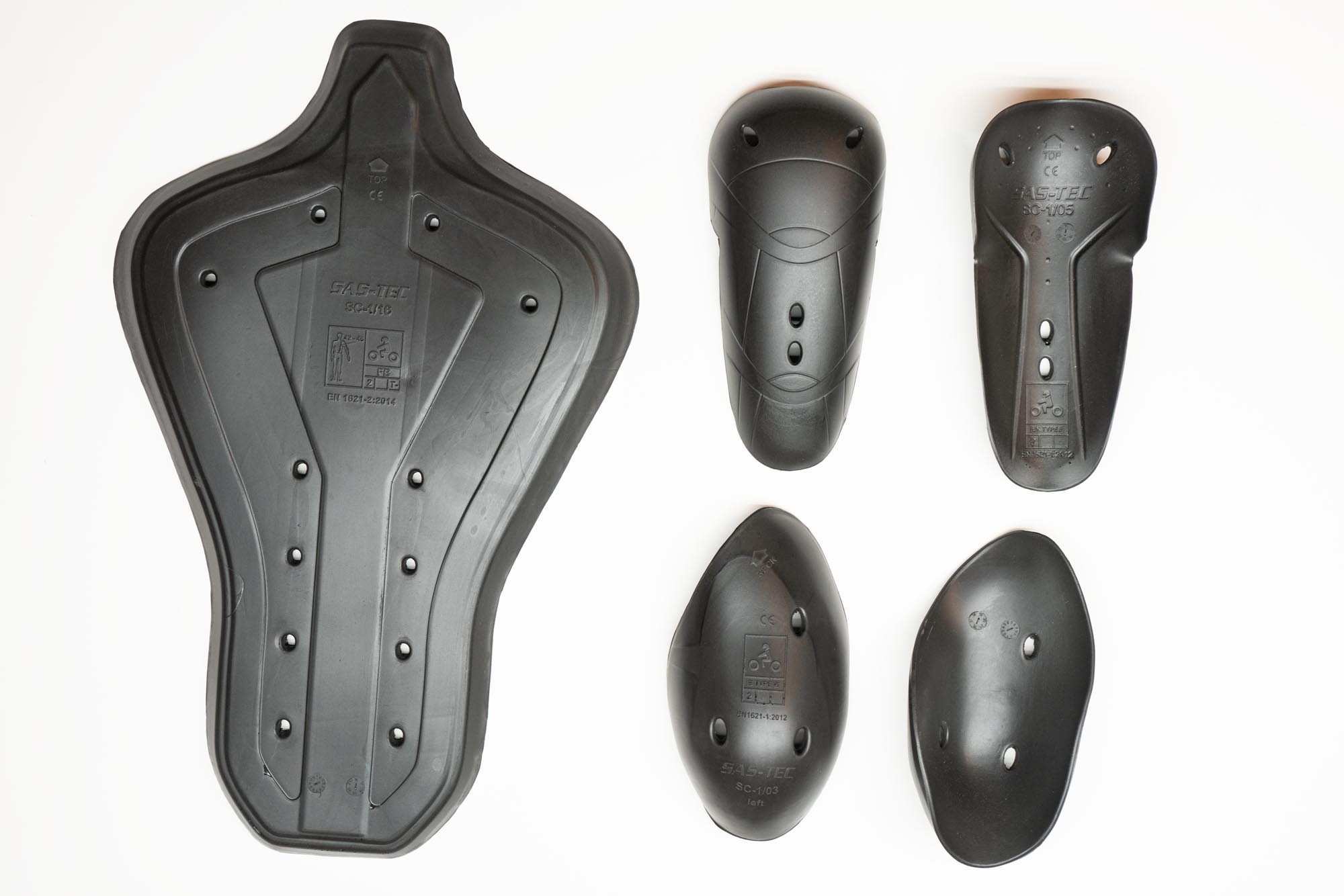
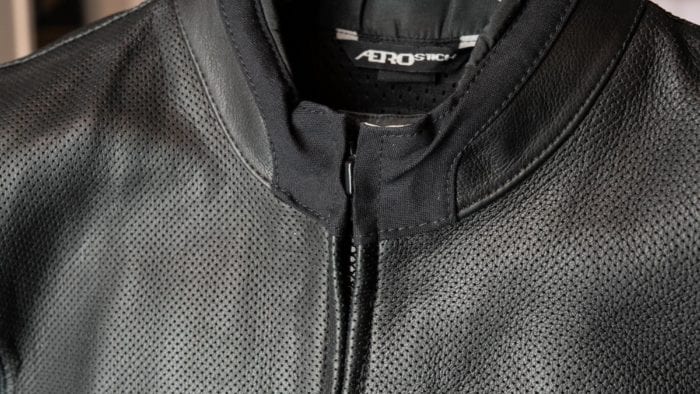
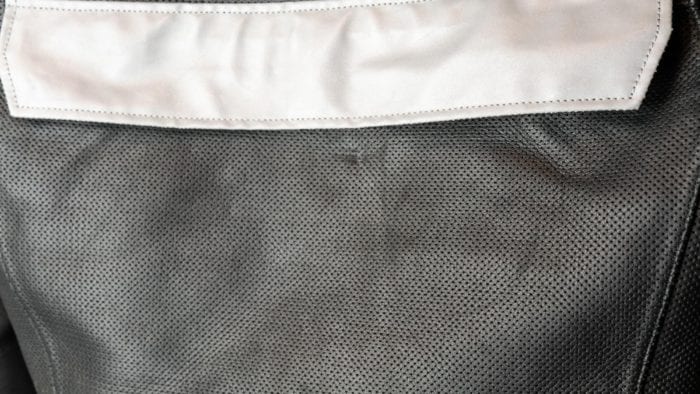
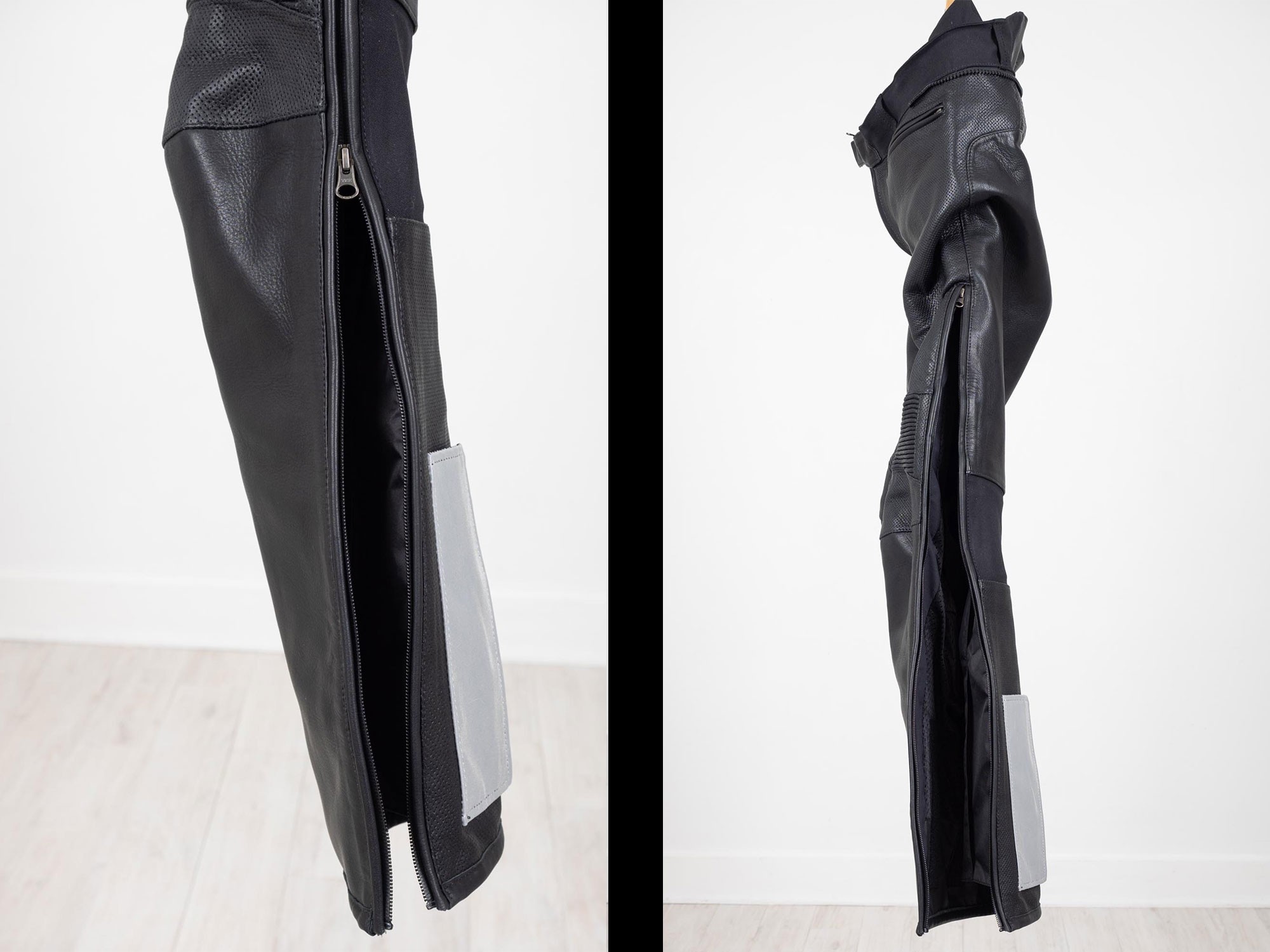
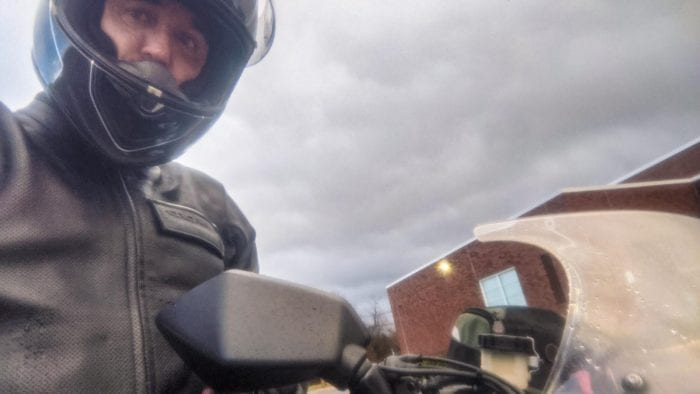
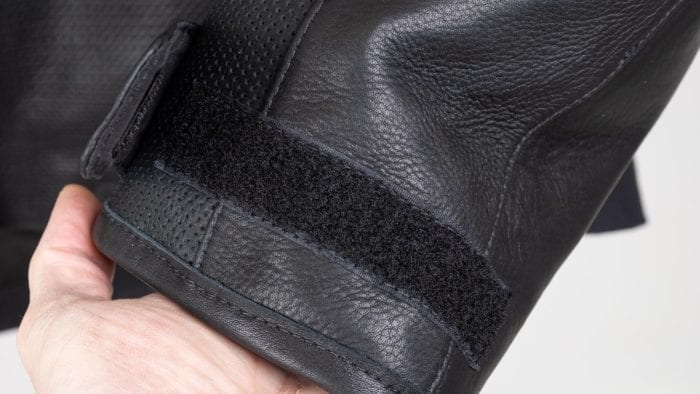
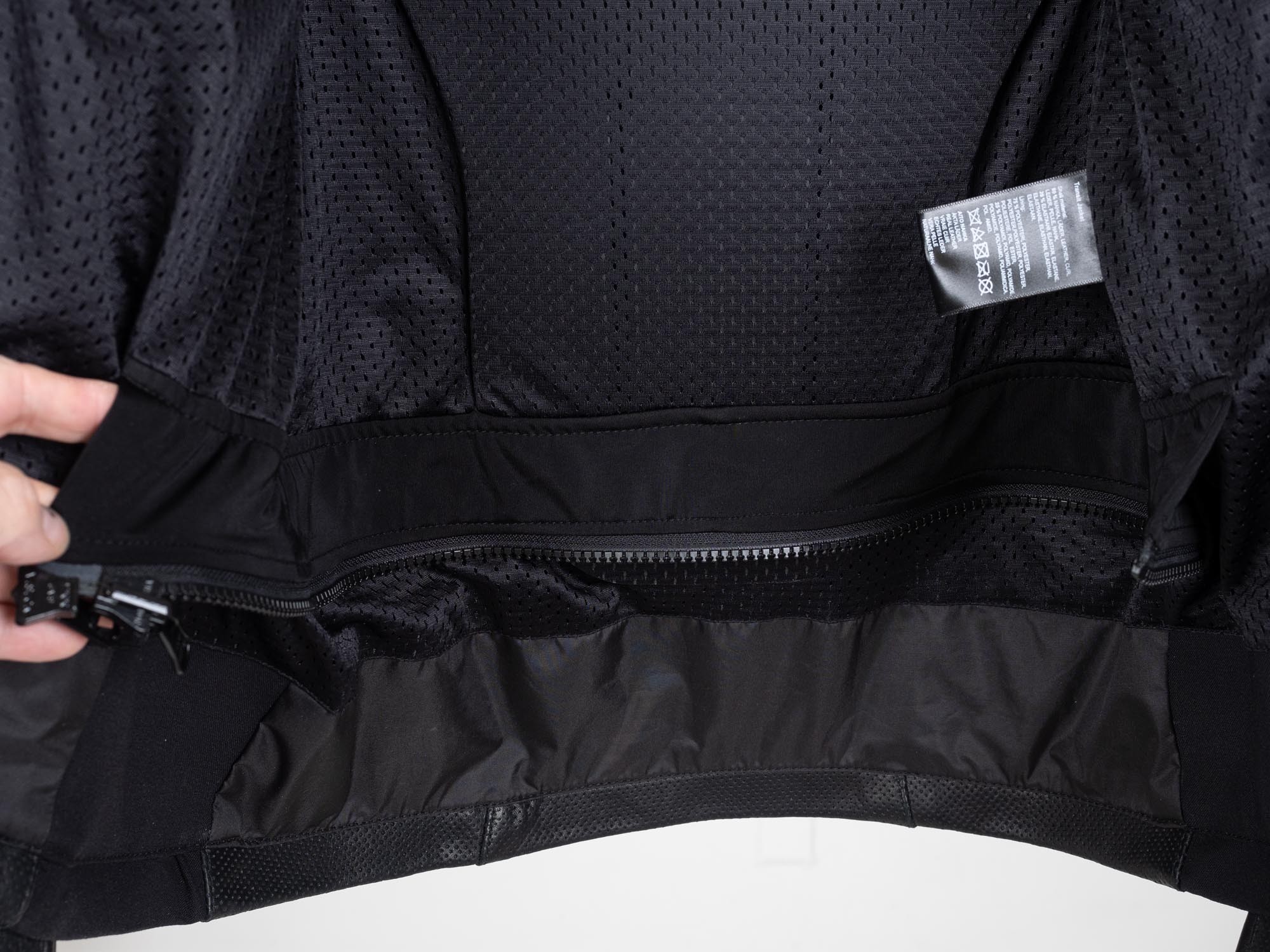
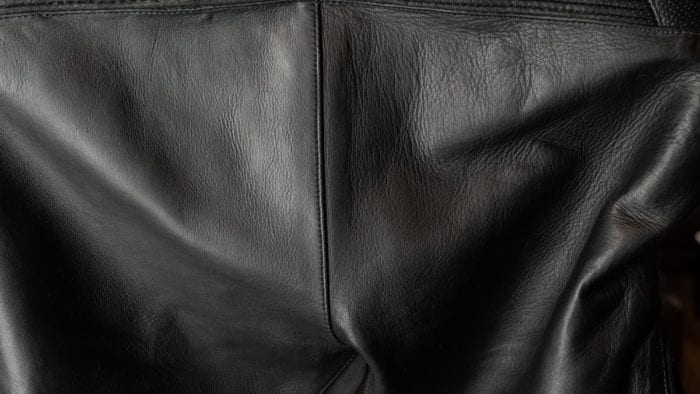
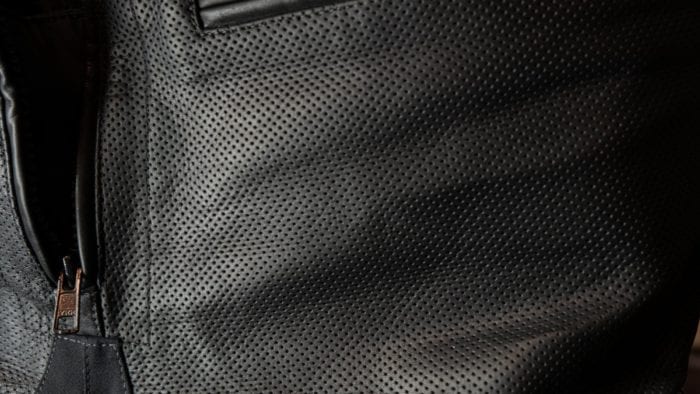
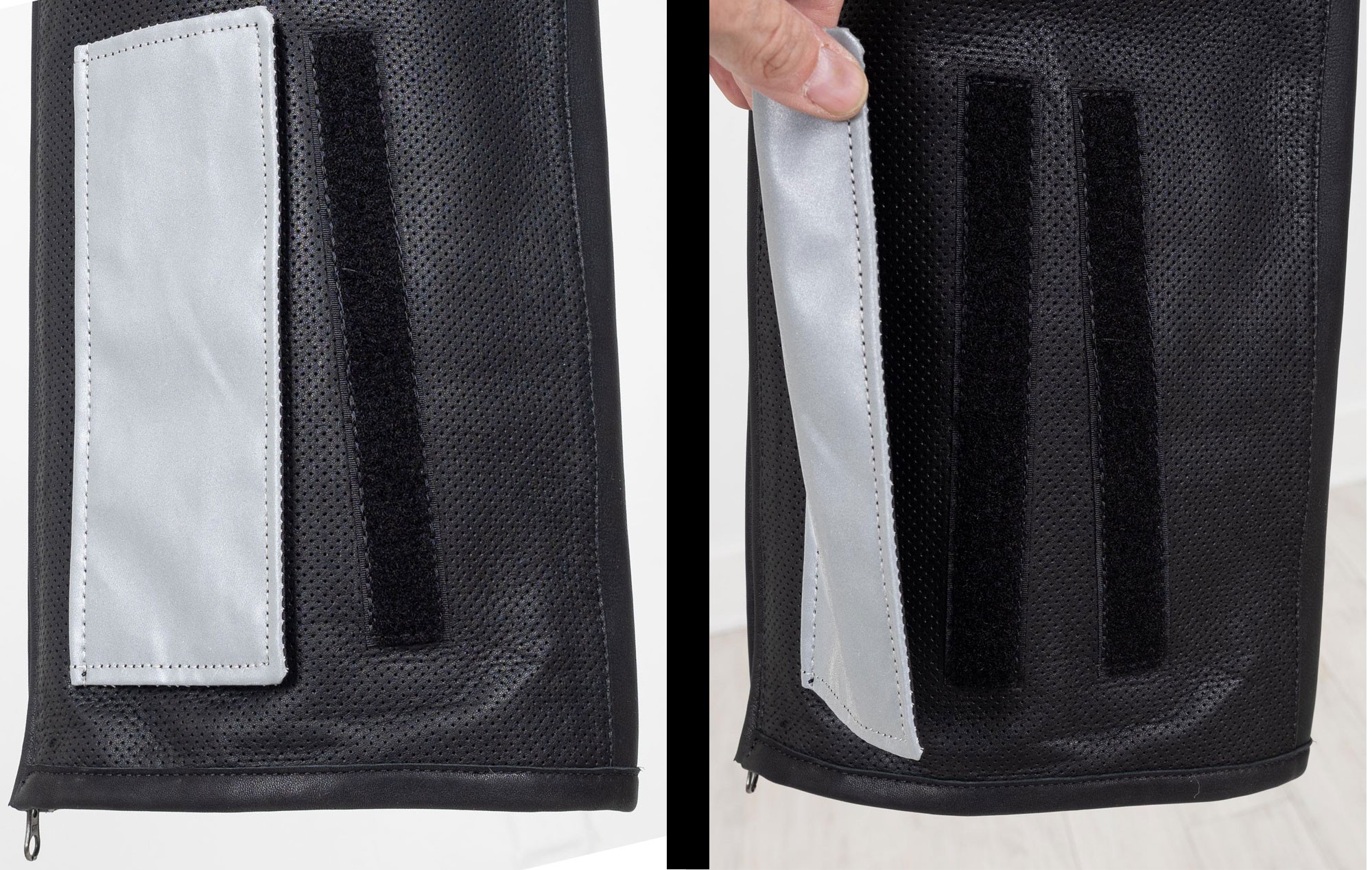

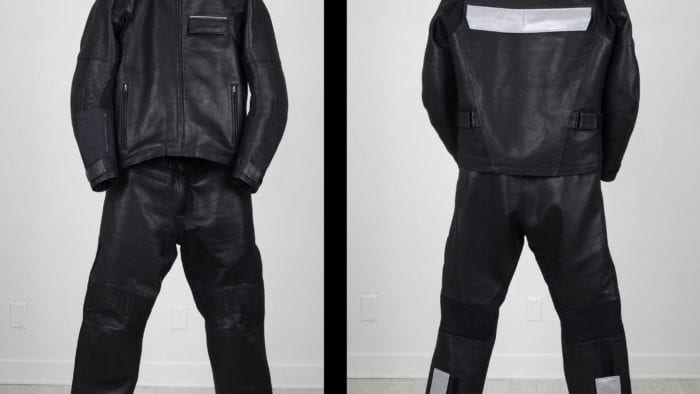
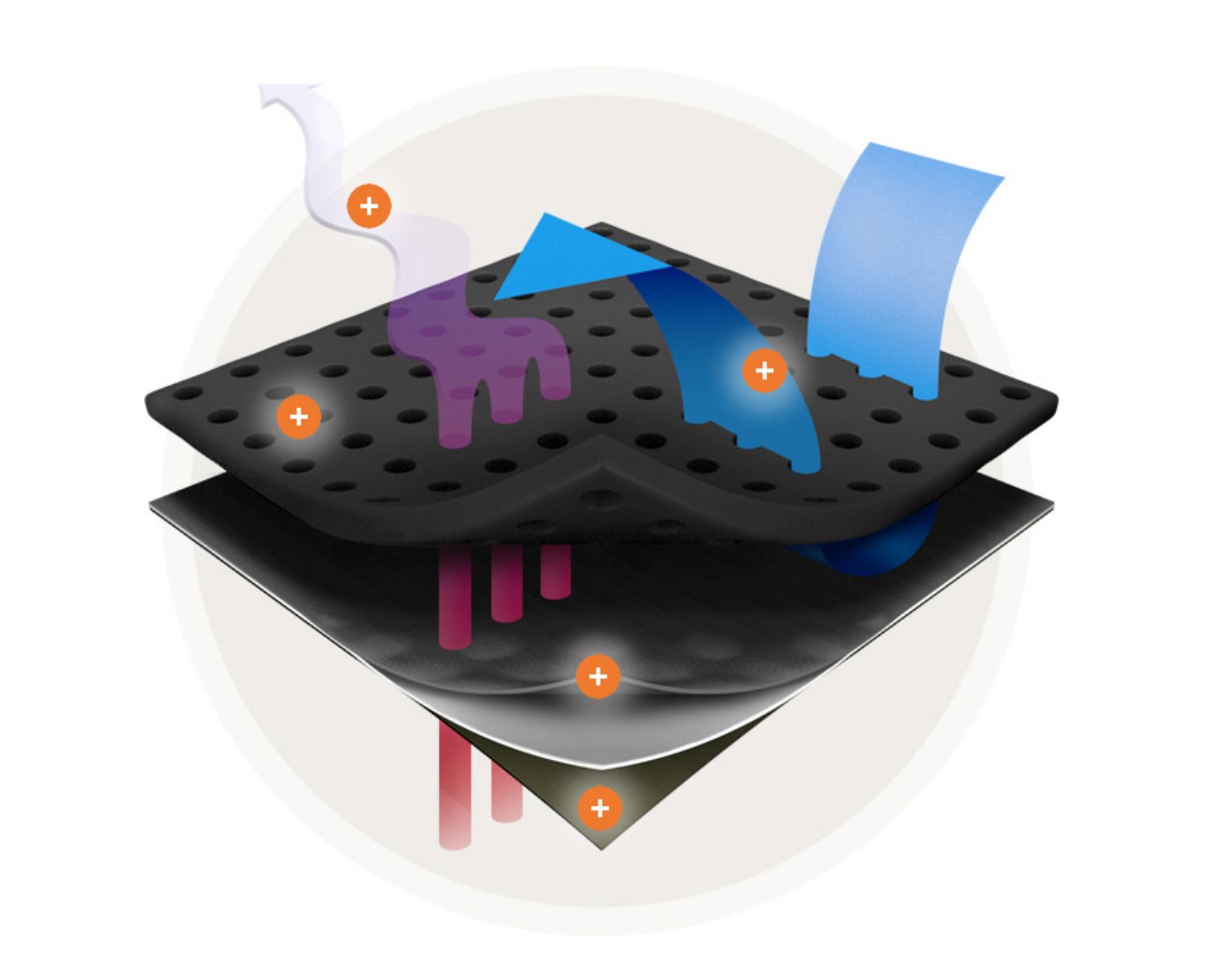
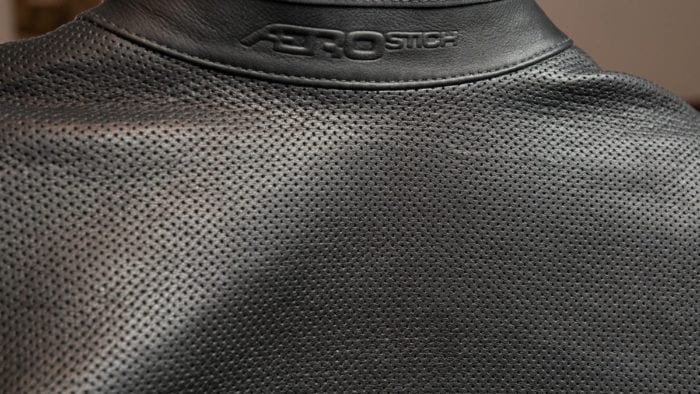

This is a lifetime purchase. You will not need to buy another suit. I agree about the heat and humidity. Your location may vary…..
Hi Brandon, great review. Have been thinking about the suit (yeah, cost is an issue). Cold weather, any experience riding in it? Live in the northeast and the heat and humidity can be ugly in summer months, the more common need is gear for spring and fall riding where the temp swings can be down to the 40’s with wind. At times I wear a heated vest under my current jacket. Curious if you or other owners use the suit in colder weather.
https://www.webbikeworld.com/aerostich-transit-v3-two-piece-suit-review/?utm_source=Motorcycle+Newsletter&utm_campaign=8e52c9f22a-EMAIL_CAMPAIGN_2020_10_18_11_50_COPY_02&utm_medium=email&utm_term=0_b175d17323-8e52c9f22a-131724813
YOU TOTALLY MISSED THIS BLACK SUIT DOES NOT GIVE 360 REFLECTIVE SAFETY …
AS SOON AS YOU STEP OFF YOUR BIKE AT NIGHT AS IN A BREAK DOWN YOU ARE ONLY SEEN FROM BEHIND .
THAT IS NOT GREAT AT ALL .
ALL MY RAINSUITS FEATURED 360 DEGREE REFLECTIVE material on legs and chest .
I have noticed this lack of 360 mostly Chinese produced stuff .
Europeans sure like 360 safety .
So do North American Work safety clothing .
Nope I would not buy this suit .
Take care shiny side up !
I appreciate your response, Charles. While I did point out the existing reflectors in my initial review (https://www.webbikeworld.com/aerostich-transit-3-two-piece-suit-review/ ) you are correct, there not reflectors to cover a full 360 deg range here. If this is an important issue Spidi, Oxford, and Fly racing all offer hi-viz vets for under $30.00 (USD)
Thanks for commenting, Gary. I should have made more a of a point about cooler weather in this review. The wind is very effectively blocked with the Transit suit. I have worn the Transit suit in 40 deg-ish weather with a pair of thin thermals under the pants and wearing a nice thermal Nike long sleeve shirt (Pro-Combat line) along with my Thawdaddy heated vest. The Thawdaddy is a lightweight, battery-powered heated vest but thanks to the wind blocking of the Transit suit this combination was comfortable for my 30-40 minute commute in these temperatures. If it was longer highway miles an adiditional layer might be good as over time high speeds in the wind will still suck heat away from you. Hope that helps!
Maybe the Transit 3 suit is water resistant, but, it certainly is downpour lucky. Since I started to wear the suit I haven’t had enough rain on my trips to test it out.
With that said, I like my suit, and find it more comfortable to wear than I expected, although, yes the sleeves and legs are longer than I would like. The annoyance is getting the sleeves
properly tightened while you hold the excess length for cuff positioning. No big deal, just takes longer to get going.
I ride a fully faired bike, so the Transit 3 vents don’t help much , over 78F I want to take it off, 85F I stop and take it off.
Cold ? Under 65F I usually wear a much larger jacket for more layer room, and longer waist length.
I am happy with the suit, and compared to other leather suits, the price isn’t out of line, especially considering the advanced features.
Wondering how the Transit would do with some dual sporting? Highway and gravel roads primarily.
There are stretch panels, but perhaps not enough? Not sure.
It might be OK for some gravel roads but personally I find it to heavy/bulky to think of using it in offroad situations. It’s great on the road but dual-sport might push the limits a bit. I will say it has a better chance of remaining comfortable climate-wise in warm weather than most any other leather options that are waterproof.
Brandon thank you for this comprehensive and entertaining follow up on the Stich suit. I was waiting for your longer review before gulping down the price of the suit. I don’t ride in a lot of rain living here in the SF Bay Area, but it does rain when we aren’t in a drought. In nice weather I wear the KLIM Marrakesh jacket and pants which I will be reviewing here on WbW.
But I’ve often wanted something ‘leather’ since during my road racing times and crash(es) I never had any road rash or broken bones. So I’ve wanted leather even though I’ve owned and worn Stich Roadcrafters and Dariens for some time. It appears from your sizing we are about the same size so thanks to your mom and dad for that too.
I ride a Zero DSR which I’ve reviewed here on WbW.
https://www.webbikeworld.com/2017-zero-dsr-electric-motorcycle-review/